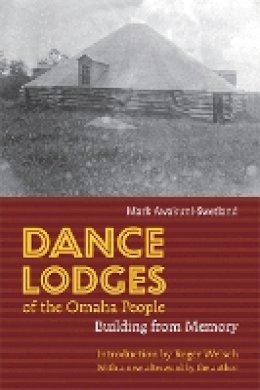8%OFF

Stock image for illustration purposes only - book cover, edition or condition may vary.
Dance Lodges of the Omaha People: Building from Memory
Mark Awakuni-Swetland
€ 23.99
€ 22.07
FREE Delivery in Ireland
Description for Dance Lodges of the Omaha People: Building from Memory
Paperback. Drawing on the oral histories of forty Omaha elders collected in 1992, Dance Lodges of the Omaha People provides insights into how these lodges shaped Omaha cultural identity and illustrates the adaptive abilities of the modern Omaha tribe. A new afterword by the author highlights advances in research on these unique structures since 1992. Num Pages: 214 pages, 7 figures, 18 halftones, 4 tables. BIC Classification: 1KB; JFSL9. Category: (P) Professional & Vocational. Dimension: 5817 x 3887 x 12. Weight in Grams: 318.
After the Omaha Nation was officially granted its reservation land in northeastern Nebraska in 1854, Omaha culture appeared to succumb to a Euro-American standard of living under the combined onslaught of federal Indian policies, governmental officials, and missionary zealots. At the same time, however, new circular wooden structures appeared on some Omaha homesteads. Blending into the architectural environment of the mainstream culture, these lodges provided the ritual space in which dances and ceremonies could be conducted at a time when such practices were coercively suppressed. Drawing on the oral histories of forty Omaha elders collected in 1992, Dance Lodges of the ... Read more provides insights into how these lodges shaped Omaha cultural identity and illustrates the adaptive abilities of the modern Omaha tribe. The lodges replaced the diminished pre-reservation tribal institutions as maintainers of tribal cohesion and unity and at the same time provided an arena for selective acculturation of outside ideas and behaviors. A new afterword by the author highlights advances in research on these unique structures since 1992 and speculates on the connection between these lodges and the spread of the Omaha Hethushka dance across the Great Plains. Show Less
After the Omaha Nation was officially granted its reservation land in northeastern Nebraska in 1854, Omaha culture appeared to succumb to a Euro-American standard of living under the combined onslaught of federal Indian policies, governmental officials, and missionary zealots. At the same time, however, new circular wooden structures appeared on some Omaha homesteads. Blending into the architectural environment of the mainstream culture, these lodges provided the ritual space in which dances and ceremonies could be conducted at a time when such practices were coercively suppressed. Drawing on the oral histories of forty Omaha elders collected in 1992, Dance Lodges of the ... Read more provides insights into how these lodges shaped Omaha cultural identity and illustrates the adaptive abilities of the modern Omaha tribe. The lodges replaced the diminished pre-reservation tribal institutions as maintainers of tribal cohesion and unity and at the same time provided an arena for selective acculturation of outside ideas and behaviors. A new afterword by the author highlights advances in research on these unique structures since 1992 and speculates on the connection between these lodges and the spread of the Omaha Hethushka dance across the Great Plains. Show Less
Product Details
Format
Paperback
Publication date
2008
Publisher
University of Nebraska Press United States
Number of pages
214
Condition
New
Number of Pages
214
Place of Publication
Lincoln, United States
ISBN
9780803217577
SKU
V9780803217577
Shipping Time
Usually ships in 7 to 11 working days
Ref
99-1
About Mark Awakuni-Swetland
Mark Awakuni-Swetland (1956–2015) was an assistant professor of anthropology and ethnic studies at the University of Nebraska–Lincoln, where he taught Omaha language classes and coordinated the development of Omaha language curriculum materials. Roger Welsch is the author of over thirty books, including Touching the Fire: Buffalo Dancers, the Sky Bundle, and Other Tales, available in a Bison Books edition.
Reviews for Dance Lodges of the Omaha People: Building from Memory
“This volume is a success as both history and ethnography and presents a useful case study of Native cultural resistance and adaptation to pervasive efforts at detribalization and assimilation. It also emphasizes the research value of tribal oral history and illustrates how such histories might be collected and preserved for future generations.”—John M. O’Shea, Journal of Anthropological Research
